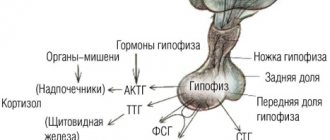Nobody likes it when their pets get sick and they hardly like it themselves. Cats experience suffering and pain when they develop a skin disease called pyoderma. Even an ordinary fight with a street cat or a household injury can cause the development of the disease. How to recognize it and is it possible to protect your pet from the occurrence of this evil disease? The answer to these and other questions can be found later in the article.
Pyoderma in a cat - what is it?
Pyoderma itself in cats is a disease of the animal’s skin, which is characterized by bacterial inflammation. This disease in the cat family is most often accompanied by another disease. That is, it is not independent on its own. It occurs during allergies, parasitism or diseases within the body, organs, and so on.
It is worth noting that the disease is quite rare and not typical of cats, because they are clean animals and do not allow large amounts of bacteria and dirt on their skin and fur.
However, it is worth delving into the specifics of the disease , what it is in general. It often occurs when the cat is injured or cut and the wound becomes infected. It is characterized by a large number of pustules and crusts on the skin and skin of the animal. They are often filled with pus and cloudy fluids. Sometimes hair loss occurs, but we’ll talk about the symptoms and types of the disease later.
It is worth mentioning that in most cases the disease goes away and the cat recovers. However, you need to contact a veterinarian, because otherwise there is a risk of worsening the condition and illness. You should call a doctor at home to avoid problems with stress and anxiety, otherwise there is a risk of complications of the disease.
Acne
A type of acne in cats. Characterized by the appearance of comedones (closed or open). Often localized in the chin area.
The main reasons are gross violations of the rules of caring for the animal, stressful situations, pathological conditions of the sebaceous glands and hair follicles. An external examination reveals black or white spots, local alopecia, and the presence of hard crusts. Acne can be complicated by painful ulcers and ulcers, leading to the generalization of a bacterial infection.
Treatment is the local use of antiseptic and antiseborrheic drugs in the form of soap, shampoos (tar), solutions (chlorhexidine, miramistin). When the infection is generalized, antibiotic and hormonal therapy is used.
Causes of pyoderma in cats
The disease enters the body and the epidermis for several reasons, we list them below:
- Dermatitis develops, which appears due to a flea bite.
- The cat has long hair and is not properly cared for by the owner.
- Often use the same products to treat pet fur and skin.
- Scratches and wounds that take a long time to heal.
- The presence of ringworm, the endocrine gland does not work properly, and hypothyroidism develops.
- There is a small amount of vitamins and minerals in the cat’s body, the diet is incorrect, unbalanced, it lacks the necessary microelements for development, growth and the immune system.
- The body weakly and poorly resists allergies, which come in a wide variety of types, shapes and sizes. In addition, the animal is capable of attacking a parasite or mite, which causes itching, irritation and subsequently illness.
- Demodecosis.
- Endocrine system disorders, the thyroid gland does not work properly, and the animal develops diabetes mellitus.
- Dermatitis caused by fleas.
They say that most often in most cases it is mites that cause pyoderma, but not only in cats, but also in dogs, and in general in most mammals, including humans. However, there are people who oppose this theory.
Prevention
To protect your pet from this unpleasant disease, the following rules should be followed:
- Treat scratches and wounds in a timely manner.
- Treat the animal against fleas and parasites, use anti-flea collars.
- Develop a balanced diet for your cat, eliminating potential allergens (soy, seafood, wheat gluten) from food.
- Provide proper care for the animal's skin and fur.
- Treat fungal infections and dermatitis in a timely manner.
- Diagnose endocrine diseases.
The main symptoms of pyoderma disease in cats
It is not so easy to identify the disease and often even experienced veterinarians are not able to do this at first glance without analysis and a detailed examination.
It is worth saying that different forms, accordingly, have different signs of the disease. But in any case, all signs must be given special attention. For example, in the superficial form, symptoms include baldness, as if the cat had been eaten by moths. In addition, the cat has severe itching, papules, scales, wounds, pustules, and so on.
Sometimes the skin peels off, “weeping” wounds appear, which flake off and fall away from the skin and skin of the cat. Often the disease affects the muzzle, mucous membranes, for example, lips, chin, and so on. Crusts and ulcers form.
The deep form is characterized by the following features:
- The ulcers become more widespread over the surface of the skin, larger in size, and there is more pus and it is released from the wounds.
- Erosion appears on the surface of the skin.
- Severe scabies, itching, pain, and so on.
- Often the color of the skin changes and becomes painful.
Sepsis sometimes occurs, but this case is rare. In addition to the above, there are symptoms that are rare, but in combination with the above, there is a high probability that the disease is pyoderma. These include: the body temperature becomes higher and higher, the body is weak, the cat loses its appetite, it feels depressed, and does not want to communicate.
So, to summarize the symptoms, you should pay attention to the following signs:
- Pet baldness, complete or partial. Even the tail becomes bald, and physical damage appears on the surface of the skin.
- The cat gets itchy, the animal is always itching.
- Inflamed scales appear on the diseased surface of the skin.
- The skin becomes covered with a hard scab and the longer you do not take action or treat, the larger the wound will be.
- If left untreated, a purulent rash appears even on previously healthy areas of the body. Occurs on the muzzle, belly, tail, mucous membranes and where the skin is especially delicate.
- Animal or passive, does not want to communicate, hides in dark corners. Or very “twitched up”, aggressive, does not allow himself to be touched.
- The disease penetrates into the deeper layers of the epidermis, deeper and deeper, which causes it even more pain and sepsis occurs, but, as already mentioned, sepsis is a rather rare form and is more likely to occur in stray cats that have been injured, for example, in battle.
For general development, it is worth saying that the disease is accompanied by two types of bacteria: Staphylococcus pseudointermedius and Staphylococcus schleiferi.
Etiology of appearance
The disease is preceded by mechanical damage to the skin of the animal. If there are cuts and scratches on your pet's skin, there is a possibility of infection getting into them.
Reference!
Pathogenic microorganisms develop pathogenic microflora, which leads to the formation of painful, purulent inflammations.
All cats are susceptible to infections, regardless of age and breed. However, most often it is young and old individuals with weak immune systems who get sick.
The disease is preceded by mechanical damage to the skin of the animal. If there are cuts and scratches on your pet's skin, there is a possibility of infection getting into them.
Reference!
Pathogenic microorganisms develop pathogenic microflora, which leads to the formation of painful, purulent inflammations.
All cats are susceptible to infections, regardless of age and breed. However, most often it is young and old individuals with weak immune systems who get sick.
Reference!
Diagnosis of pyoderma in a cat
Only an experienced veterinarian can diagnose pyoderma. These veterinarians include veterinary experts who arrive on call within an hour and at the same time prescribe a course of treatment after a detailed diagnosis and examination of the animal.
It is worth remembering that a simple visual inspection is not enough here. The disease is determined only through tests. Our veterinarian will conduct an express analysis method and tell you the results within 15 minutes .
If the disease has acquired a deep form, a biopsy is sometimes prescribed, but this is rare. When the disease is confirmed, and doctors are able to determine it with 100 percent probability, they prescribe treatment, which we will discuss further.
Treatment of pyoderma in a cat
Immediately after the disease has been diagnosed, the doctor grooms the animal. The area of skin that is affected needs to be freed from hair and allowed to “breathe”. After this, you should treat the surface of the skin with a product that has antiseptic properties. These include both simple brilliant green and a concentrated solution of potassium permanganate. It is worth noting that even the prescription of such a remedy should only be done by a veterinarian. He determines the optimal dosage and course of such initial treatment.
It should be noted that drugs are prescribed only by a veterinarian . Reading on the Internet about a remedy that will definitely help is a bad strategy that can lead to complications and consequences that even an experienced veterinarian cannot correct. Indeed, in such a case, he will have to deal with several pathologies and very often the animal’s immunity simply cannot withstand the loads placed on it.
Of course, there are also home remedies , tinctures and other drugs. Often on different sites they recommend using them in the treatment of pyoderma, they even recommend dosages and course of treatment. but the fact is that each cat is individual, both in size with the breed and on a more complex level. For example, if she has a personal intolerance to some product or component, then such treatment will not lead to anything good. The immune system will weaken even more and the disease will begin to spread to uninfected areas. Through wounds and pustules, diseases and infections enter the body, which are then difficult to treat.
It is worth mentioning separately about prevention to prevent disease and allergies. It is worth doing an allergen test and avoiding those that negatively affect the animal’s body. Such actions require consultation with a veterinarian who can accurately prescribe the necessary procedures and avoid illness.
It is important to prepare for the fact that recovery is not difficult, but it takes quite a long time and you need to be patient. Do not give up treatment halfway, because the disease can return with renewed vigor. A veterinarian will monitor the recovery process.
It is important to examine your pet for wounds and, if necessary, treat them with antiseptic drugs.
Fungal infections
They are usually caused by fungi of the genus Trichophyton or Microsporum. Accordingly, the diseases are called trichophytosis and microsporosis, for the average person - ringworm.
As a rule, these diseases occur in animals with weakened or unformed resistance to diseases. These may be young animals or adults who have suffered serious illnesses.
Fungi reproduce through microscopic spores that the pet owner can carry on clothing or shoes. You can also become infected through direct contact with a sick pet.
Attention! Infectious skin diseases of animals are also dangerous for humans. Take precautions when handling sick pets.
Symptoms of fungal infections:
- The presence of baldness in the area of the animal’s head, tail or limbs;
- The affected areas are round in shape;
- In the center of the lesion, the skin is pinkish-red and paler at the edges, sometimes a pink rim is clearly visible;
- Noticeable peeling and small crusts in the area of alopecia;
Diagnosis is carried out by a veterinarian:
- It is necessary to take scrapings from the affected area and conduct microscopy;
- It is possible to culture the selected sample in a laboratory (this study takes several days);
- Microsporosis can be identified using a Wood's lamp - the affected hairs give an emerald green glow.
Treatment of dermatomycosis is carried out with antifungal drugs, both locally (ointments, emulsions, liniments, sprays), if the affected area is minor, and systemically - using antifungal drugs in tablets or injection solutions.
There are also a number of vaccines against dermatomycosis that provide an excellent effect in the treatment and prevention of these diseases. Vaccines are used two or three times at a certain interval specified in the instructions for use. (Vakderm, Microderm, PolivakTM).










